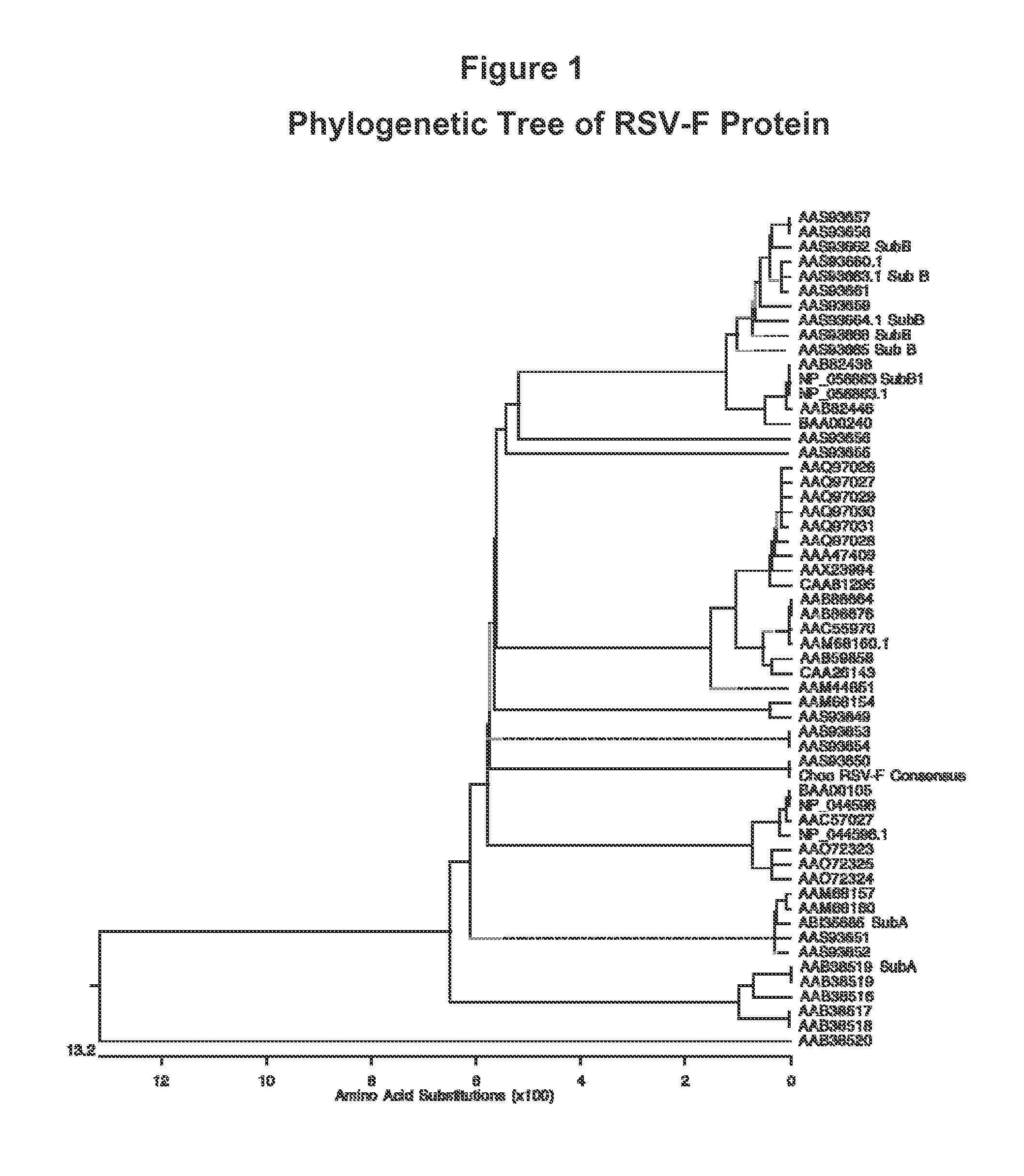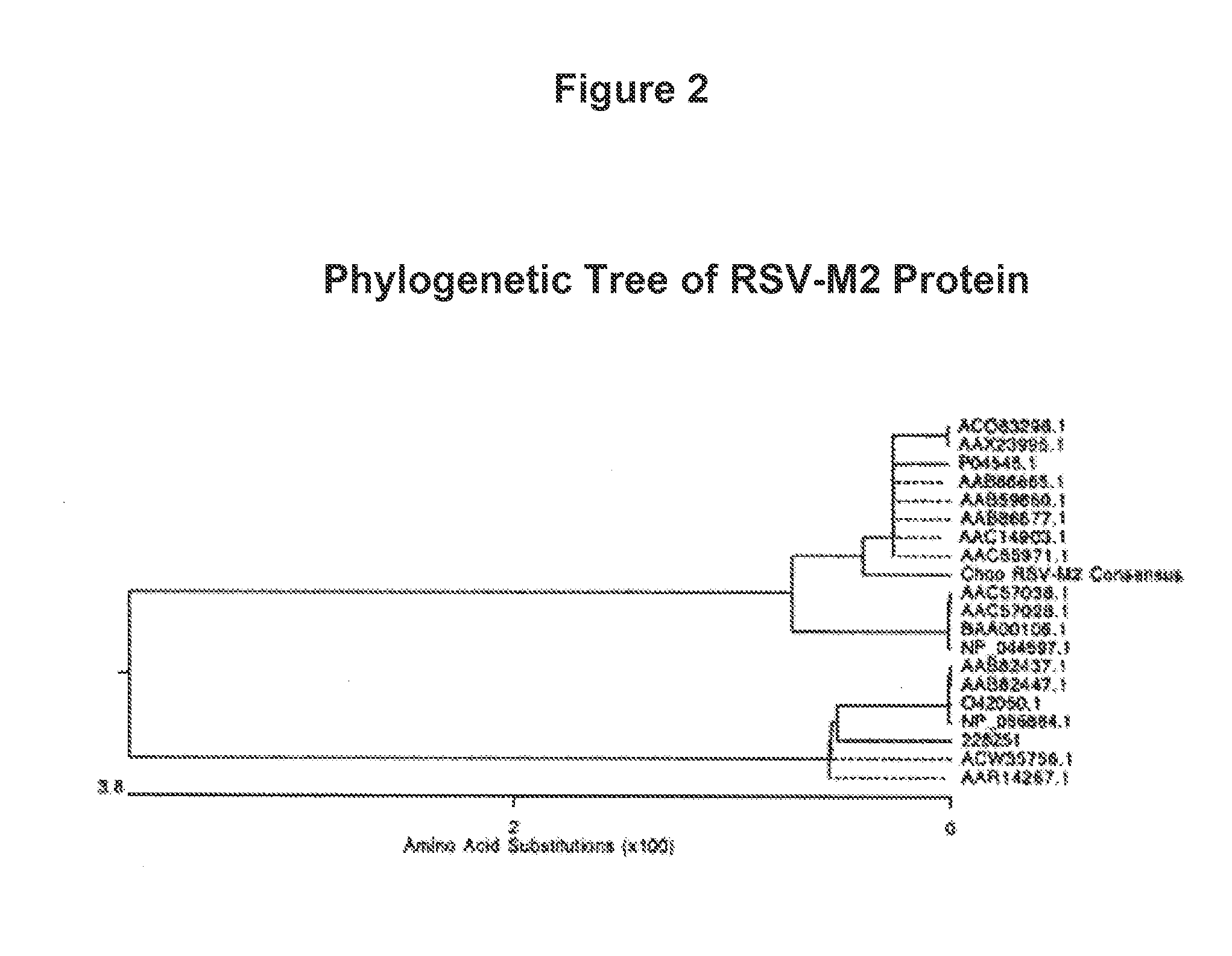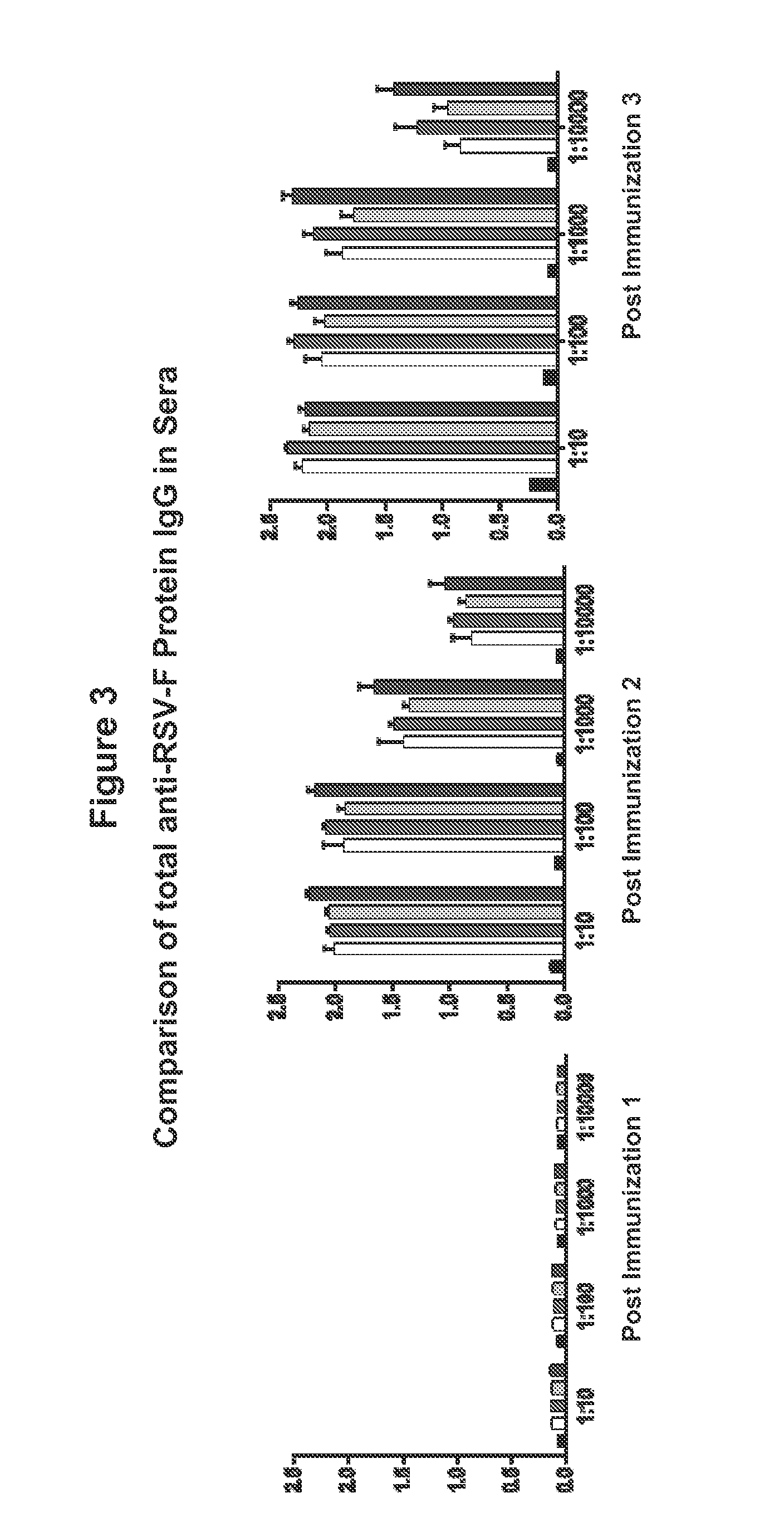Human Respiratory Syncytial Virus Consensus Antigens, Nucleic Acid Constructs And Vaccines Made Therefrom, And Methods Of Using Same
a technology of human respiratory syncytial virus and consensus antigen, which is applied in the direction of immunodeficiency syndrome, drug composition, peptide, etc., can solve the problems of rsv infection raising significant issues among the elderly and other vulnerable populations, affecting the immune system,
- Summary
- Abstract
- Description
- Claims
- Application Information
AI Technical Summary
Benefits of technology
Problems solved by technology
Method used
Image
Examples
example 1
[0264]With expected continued increases in the number of individuals at high risk for RSV infection in the coming years (e.g., young infants and the elderly), there is a dire need for the development of an efficacious and financially manageable treatment for RSV infection. DNA vaccines, small bacterial plasmids genetically engineered to express an encoded protein of interest upon immunization, offer several significant advantages that may help in circumventing many of the hurdles involved in designing an efficacious RSV vaccine. For instance, to prevent clinically significant illness and re-infection, the vaccine would have to confer greater and longer lasting immunity than that which occurs from natural RSV infection. DNA vaccines not only elicit both humoral (e.g., neutralization antibody) and cellular (e.g., cytotoxic T lymphocytes) immune response, but can also elicit lifelong immunity against many viruses. In addition, the primary targets for RSV vaccination are neonates and yo...
example 2
[0269]Successful expression of RSV consensus F protein was confirmed through immunofluorescence microscopy and / or western blot analysis. Constructs were used in immunization studies.
[0270]Mice were immunized with varying dosages of the different RSV DNA vaccine constructs. One group received the DNA vaccine backbone plasmid pVAX as a control. One group received 5 μg dose of plasmid RSV-F, one group received 15 μg dose of plasmid RSV-F; one group received 30 μg dose of plasmid RSV-F; and one group received 60 μg dose of plasmid RSV-F.
[0271]Mice were immunized 2 weeks apart for a total of 3 immunizations (weeks 0, 2 and 4) intramuscularly with electroporation. Mice were bled at weeks 2, 4, 6 and 12 after each immunization and the total RSV F protein specific IgG and IgA antibody was measured in the sera. FIG. 3 shows anti-RSV F protein IgG after immunization 1 (i.e. at week 0), immunization 2 (i.e. week 2) and after immunizations 3 (i.e. week 4). FIG. 4 shows anti-RSV F protein IgA af...
example 3
[0273]Chemokines are a family of small proteins secreted by cells with ability to induce directed chemotaxis toward a higher concentration gradient in nearby responsive cells. Various groups have investigated the feasibility of using chemokines as immune adjuvants.
[0274]CCL28 / MEC (mucosa-associated epithelial chemokine) which binds CCR10 is expressed on epithelial cells in the gut, lung, breast, and the salivary glands. Use of mucosal chemokines in previous studies showed their utility as immune adjuvants, inducing better immune response in the mucosal tissues after systemic immunization.
[0275]Experiments were performed to test the use of a CCL28 genetic construct as an adjuvant for the consensus RSV F protein DNA vaccine construct. A genetic construct that comprised nucleotide sequence encoding CCL20, also referred to a liver activation regulated chemokine (LARC) or Macrophage Inflammatory Protein-3 (MIP3A), was also tested as a possible adjuvant for the consensus RSV F protein DNA...
PUM
| Property | Measurement | Unit |
|---|---|---|
| Fraction | aaaaa | aaaaa |
| Fraction | aaaaa | aaaaa |
| Nucleic acid sequence | aaaaa | aaaaa |
Abstract
Description
Claims
Application Information
 Login to View More
Login to View More - R&D
- Intellectual Property
- Life Sciences
- Materials
- Tech Scout
- Unparalleled Data Quality
- Higher Quality Content
- 60% Fewer Hallucinations
Browse by: Latest US Patents, China's latest patents, Technical Efficacy Thesaurus, Application Domain, Technology Topic, Popular Technical Reports.
© 2025 PatSnap. All rights reserved.Legal|Privacy policy|Modern Slavery Act Transparency Statement|Sitemap|About US| Contact US: help@patsnap.com



